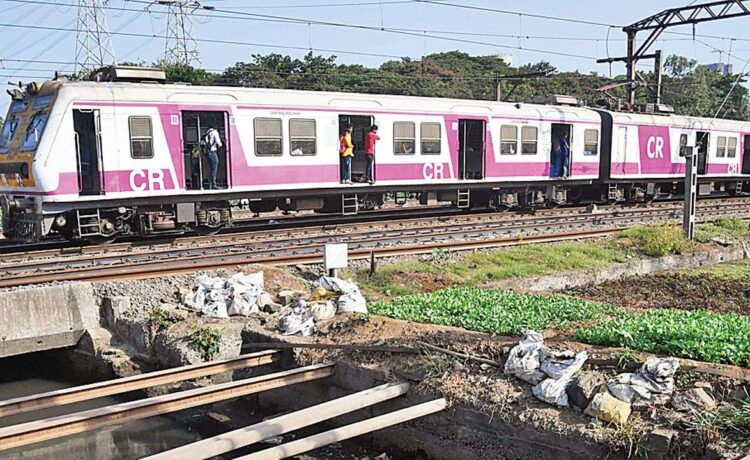The Union Budget shapes economic policies, offering insight into the government’s fiscal strategy. The Indian Railways, vital for transportation and economic development, significantly contributes to government revenues and the GDP, forming the cornerstone of India’s transportation network. As the railway sector modernizes and digitizes, it aims to enhance growth, efficiency, and contribute substantially to the country’s development, bridging urban-rural gaps and fostering employment.
Despite achievements, the Indian Railways faces challenges—aging infrastructure compromising safety, persistent safety concerns leading to accidents, operational delays, and a technological lag. A critical financial challenge includes a growing debt burden and reliance on increased funding through Gross Budgetary Support and Extra Budgetary Resources, posing a significant obstacle to sustainable development.
Past Union Budgets saw a significant increase in Gross Budgetary Support to Rs 2.4 lakh crore for 2023-24, marking a 30-fold rise since 2004-05. Allocations targeted track development, electrification, and station facilities, with achievements including full electrification in 10 Railway Zones, the development of 41 Vande Bharat trains, and plans for 400 more in the next 3 years. Efforts encompassed refurbishing 1,000 premier train coaches and producing 100 Vistadome coaches. An expert committee reviewed infrastructure, and 1,275 railway stations underwent redevelopment under the Amrit Bharat Station Scheme. The 2023-24 budget did not raise passenger or freight fares, and a dedicated freight corridor aimed to enhance efficiency and capacity.
Looking ahead to the fiscal year 2024-25, the government is expected to set a new record in budgetary allocation for Indian Railways. Industry expects a substantial makeover for the national transporter, introducing additional modern and faster trains, and enhancing safety features. The capital expenditure (capex) for the railways is anticipated to see a remarkable 25% increase from the 2023-24 budget estimate, surpassing Rs three lakh crore. The railway ministry actively seeks this boost in planned capex to support long-term infrastructure projects related to freight corridors, speedier trains, and the modernisation of the fleet, encompassing new-age trains, wagons, and locomotives.
As the industry eagerly anticipates the forthcoming budget, there is a collective vision for a governmental emphasis on cultivating a robust railway network. Expectations revolve around advocating decongestion measures and strategic planning, fostering indigenous manufacturing to contribute to a resilient and self-reliant industry. The anticipation is for a continuation of the previous year’s postulates with an undeterred throttle. The infrastructural boost towards the improvement of the National Rail Network needs to persist, ensuring that the 3000 MT mission remains a steadfast objective. Rolling stock upgrade and modernization must fast-track to enhance efficiency in revenue generation, with the procurement of Rolling Stock assets maintaining a high-priority status. Considering the anticipated overage of around 45,000 wagons between 2024 and 2031, it is crucial to add new stocks at an accelerated rate.
In the realm of potential investments for Indian Railways, the industry expects a significant focus on transformative technology, especially Artificial Intelligence (AI). Adoption of new technologies, including data analytics, aims to enhance asset management, optimize train schedules, and reduce operational costs. Predictive analytics based on data analysis is crucial for anticipating train demand, allocating resources efficiently, and minimizing delays. Additionally, AI-powered video surveillance systems and leveraging AI and IoT for predictive maintenance can significantly enhance safety and security, reducing breakdowns and improving overall system reliability. AI’s application in optimizing train schedules, planning routes, and managing capacity through Machine Learning algorithms contributes to operational efficiency and sustainability, with potential positive environmental impacts.
The railway’s safety budget is anticipated to nearly double, facilitating the expedited achievement of its Mission Zero Accidents. Despite remaining stagnant at around Rs 11,000 crore over the past two years, this increased allocation is expected for laying new lines, aiding the decongestion of Indian Railways, and ensuring its readiness for the future. With a projected need to lay 1 lakh kilometres of tracks (including doubling existing ones) over the next 25 years, this investment is expected to align with the shifting trend of goods movement from roads to railways.
The heightened capital expenditure (capex) is expected to be used for various purposes, including the introduction of 300-400 Vande Bharat trains in different formats, including those with sleeper coaches, and the overhaul of signaling systems. Additionally, such a budget can support long-term infrastructure projects encompassing freight corridors, faster trains, and the modernization of the fleet with new-age trains, wagons, and locomotives. The industry also expects the government to focus on strengthening the PLI schemes to make India an export engine of indigenous technologies. This will give a boost to domestic manufacturing and the overall exports in the railway sector, supporting the government’s vision of Make in India.
Expectations from the Union Budget regarding the Indian Railways center on a dedicated commitment to advancing the nation’s crucial transportation infrastructure. The upcoming fiscal year anticipates significant progress, marked by a historic budgetary allocation that signifies a substantial increase in capital expenditure. As the railway sector undergoes a transformative journey embracing modernization, digitisation, and an emphasis on safety, the government’s vision aligns with nurturing sustainable growth and operational efficiency. The allocation of funds to pivotal areas like infrastructure, technology, and safety reinforces the pledge to address the evolving needs of the nation. With a shared vision for a resilient and self-reliant railway industry, the forthcoming budget is expected to chart a course towards a robust and efficient future for Indian Railways, ensuring a smooth travel experience for millions.
The author is Managing Director, Jupiter Wagons
Disclaimer: The views expressed in the article above are those of the authors’ and do not necessarily represent or reflect the views of this publishing house. Unless otherwise noted, the author is writing in his/her personal capacity. They are not intended and should not be thought to represent official ideas, attitudes, or policies of any agency or institution.
















